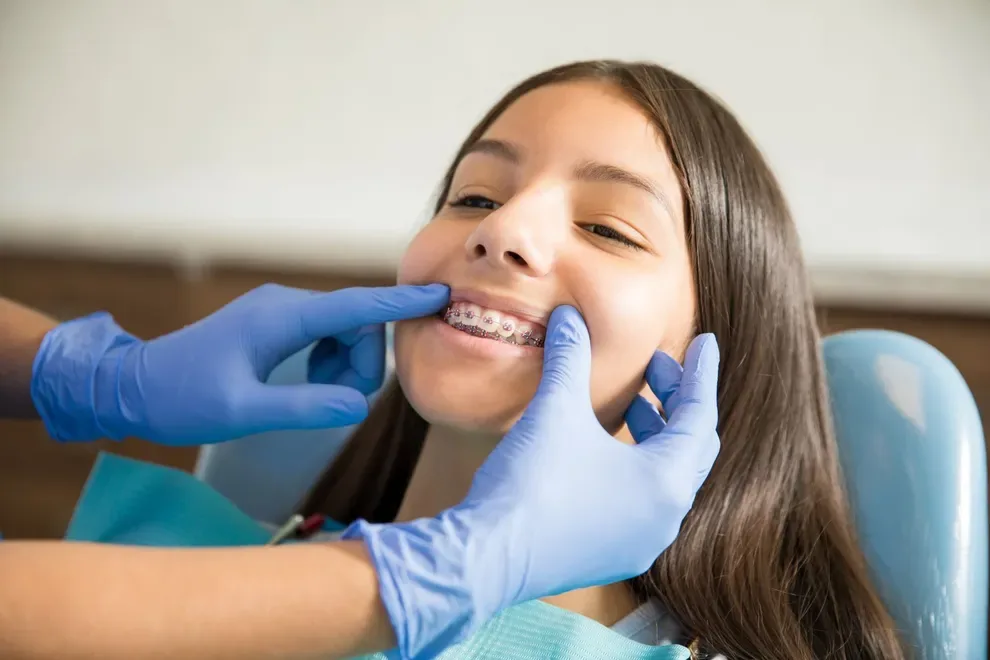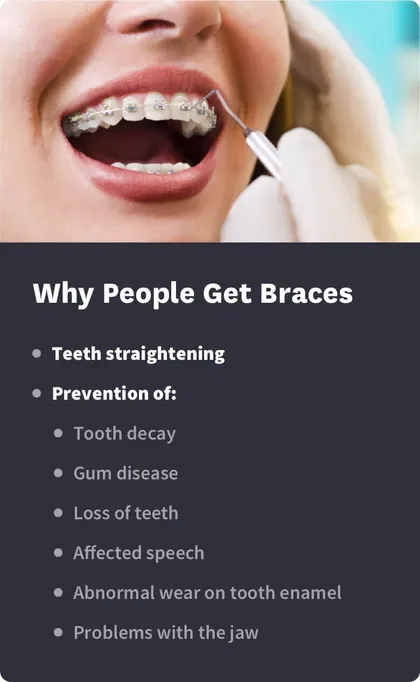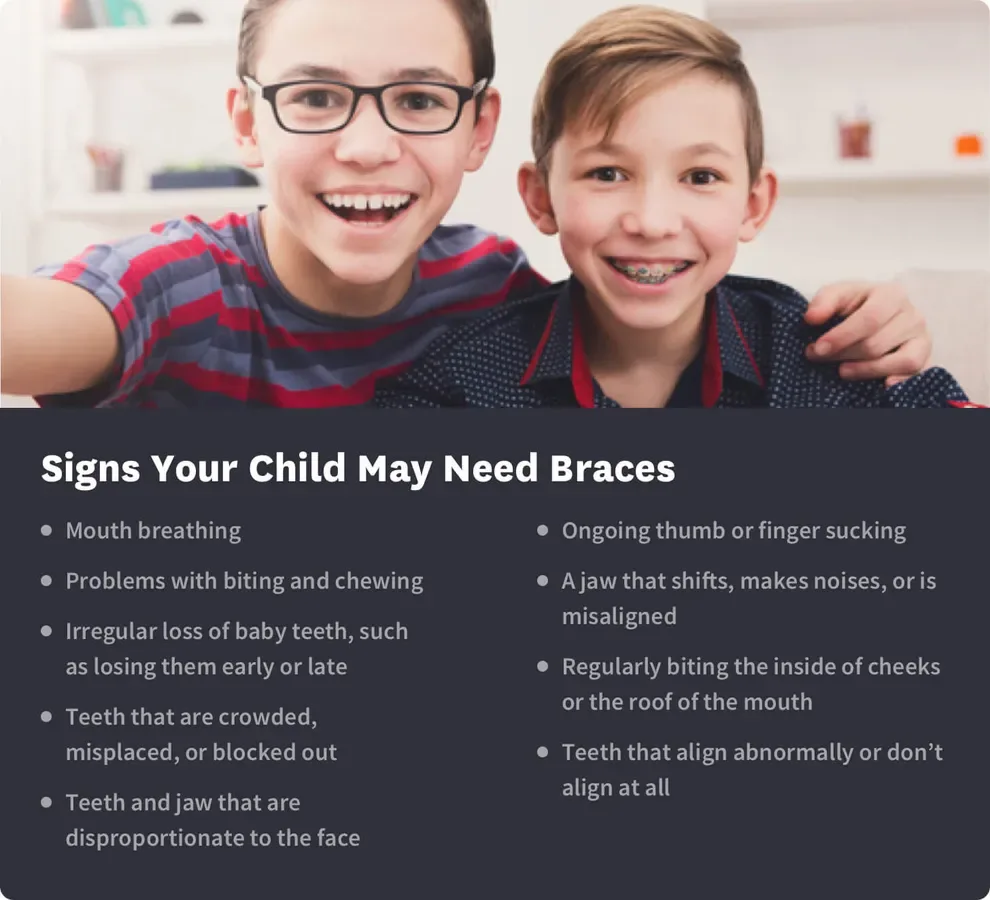At What Age Can a Child Get Braces?

Table of Contents
- Why Get Braces
- Child Braces
- Treatment Longevity
- Signs Your Child May Need Them
- Can I Get Braces As An Adult?
- Braces vs. Aligners For Children
- Does Dental Health Impact The Timeline?
At what age can a child get braces? The answer: It depends. While the American Dental Association (ADA) says orthodontic treatment often starts when kids are between ages 8 and 14, your child could be very different. Your dental professional can perform a detailed examination and create a plan that’s best for your child’s special smile.

Why People Get Braces
Most often, braces are used when someone has a bad bite or teeth that are crooked or overcrowded. Many people assume braces are just used for straightening teeth, but there are many other reasons for getting them.
Correcting an abnormal bite can help to prevent:
Tooth decay
Gum disease
Loss of teeth
Affected speech
Abnormal wear on tooth enamel
Problems with the jaw
By straightening your teeth and properly aligning your jaw, you are achieving a nice smile and also investing in your overall oral health. If your dentist has expressed concern about your bite or tooth alignment, you may want you to consider ways to straighten your teeth and correct your bite.
Braces are not the only way to straighten teeth, though they are the most traditional option. Small brackets are cemented to your teeth and then connected by a wire that is regularly tightened in order to gradually shift your teeth and jaw into the correct positions.
Signs your child may need braces
The American Association of Orthodontists (AAO) says all children should visit an orthodontist by age 7. A professional can examine your child’s teeth and create a plan to address problems before they worsen.
The AAO says problems that could respond to early treatment include the following:
Underbites (lower teeth are in front of the upper teeth)
Crossbites (upper teeth are inside the lower teeth)
Functional shift (jaw moves to one side when the teeth touch)
Crowded teeth
Spaced teeth
Missing or extra teeth
Teeth that don’t touch
If you have noticed any of the above problems in your child, you do not have to wait until they are 7 to see an orthodontist. Start by consulting with your regular dentist and then seek out an opinion about braces from a licensed orthodontist.
On average, braces need to be worn for one to three years and are followed by a retainer that must be worn regularly to keep teeth in their new positions.

How Old Must My Child Be to Get Braces?
According to the ADA, most children get braces between ages of 8 and 14. That guideline is based on the typical growth rate of a child’s teeth and jaw.
The ADA explains that a child’s adult teeth typically erupt (break through the gums) when a child is between ages 6 and 13. Waiting until the adult teeth are in place means orthodontists aren’t applying pressure to baby teeth that might fall out soon anyway.
Similarly, researchers say that a child’s jaw is relatively short at birth. As we grow, our jaws get longer and deeper. Sometimes, small children can use tools like palatal expanders to make more room for teeth, avoiding the need for extensive orthodontics later in life. A child may not get braces until those other options have been explored.
Can I get braces as an adult?
While most people who get braces in their lifetime get them as children, you can get braces at any time. The ADA explains that teeth can be treated with orthodontic procedures, such as braces, at any age. In fact, one in five customers at an orthodontist’s office is over the age of 18.
Adults have many reasons for seeking braces later in life. According to Colgate, reasons adults get braces include:
A desire for straighter teeth
Difficulty with brushing and flossing due to crowded teeth
Uncomfortable chewing caused by an overbite or underbite
A desire for increased confidence with a better smile
Adults sometimes have to wear braces longer than children do, as their jaws are no longer naturally developing. But the results are often the same and well worth the wait.
Do the Effects of Braces Last on Kids?
Orthodontic treatment, including braces, is highly effective and works well for most people. You must be committed to the treatment, and follow your care instructions closely in order for the treatment to be as effective as it can be.
Following braces, your child will need to wear a retainer in order to prevent their teeth from shifting back into their original positions. Orthodontic treatment is meant to be permanent, though it requires ongoing maintenance as teeth can move.
Wearing braces for as long as your orthodontist recommends, as well as diligently wearing a retainer for the recommended duration of time after braces, ensures lasting effects from orthodontic treatment.
Does dental health impact the timeline?
More than your child’s age factors into a braces timeline. Your dental professional must also ensure that your child’s mouth is healthy enough for braces.
Braces consist of wires connected to brackets, and those brackets are glued directly to teeth. It’s not easy to brush around braces, and it’s challenging to floss. If your child has significant plaque buildup on the teeth, accompanied by gum disease due to that plaque, the condition could worsen during orthodontic treatment. Your child’s dentist should ensure that plaque is removed and gums are healthy before the braces are applied.
You can help your child develop a healthy mouth by creating a cleaning routine. Encourage your child to brush with a fluoride toothpaste for two minutes twice daily. Teach your child to floss regularly, and add a mouthwash if your dentist thinks it’s a good idea. Visit the dentist regularly for professional cleanings, too.
Braces vs. aligners for children & teenagers
For some orthodontic issues, especially those that are severe or complex, braces may be needed. However, some mild or moderate orthodontic issues may be corrected with other treatment options.
For children and teenagers with serious or complex bite and smile issues, braces may be needed for corrective treatment. The average treatment time for braces is one to three years.
Aligners are virtually invisible and removable for cleaning and eating, which make them an appealing treatment choice for teenagers with mild or moderate orthodontic problems. They work more quickly as well, with an average treatment time of six months.
But their removability also could create problems during treatment if the adolescent isn’t able to keep up with wearing them as advised (usually for about 22 hours per day).
Aligners are also an option for younger children with mild or moderate orthodontic problems, as providers may offer treatment for ages 6 and up. Again, the option of removing aligners may be problematic in children’s treatment. Younger children may refuse to keep the aligners on or have trouble getting used to them.
Aligner providers may be able to adjust treatment for children to ensure more gentle pressure is applied.
If you think aligners may be right for your child, talk to an aligner treatment company or orthodontist.
